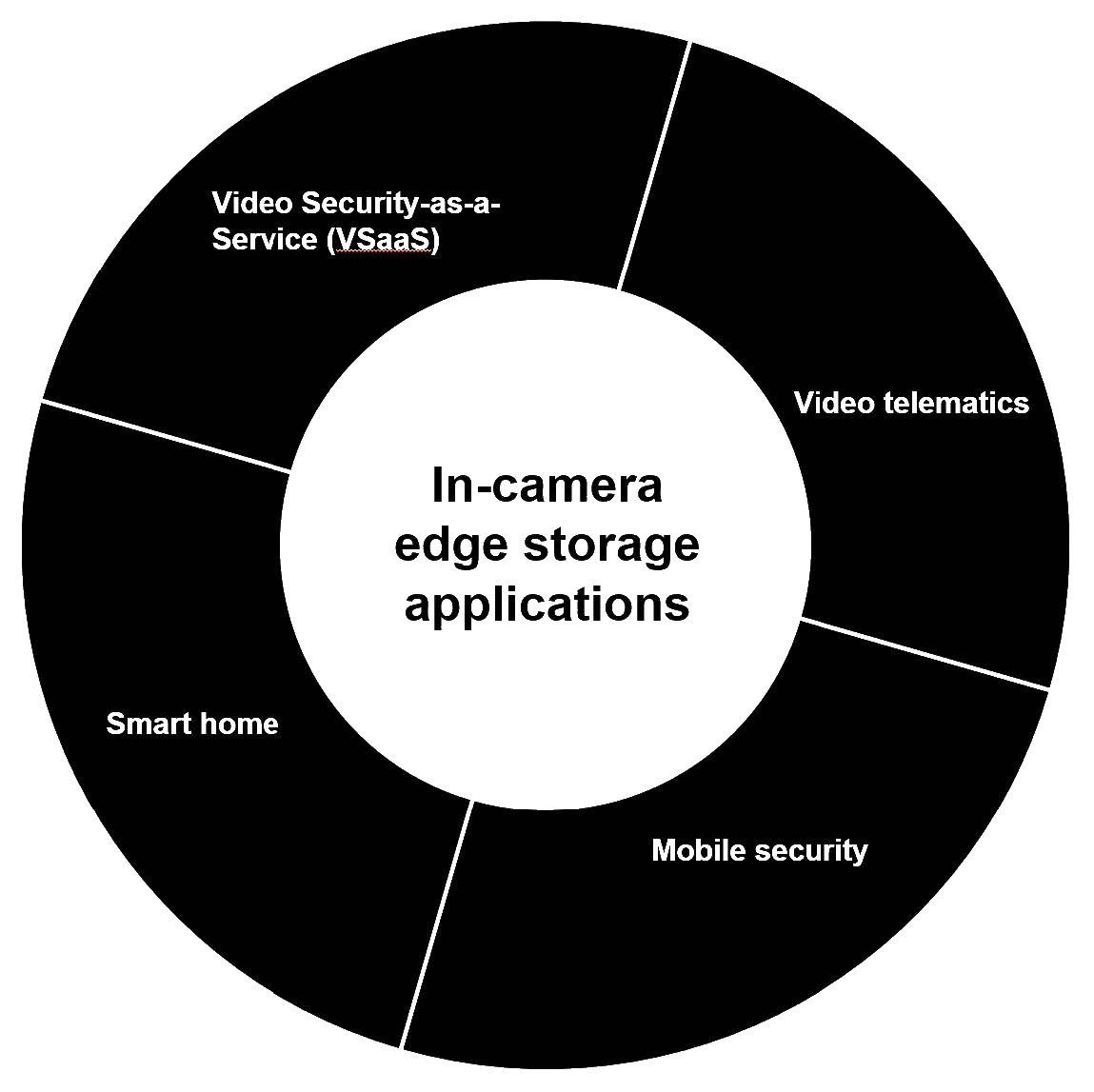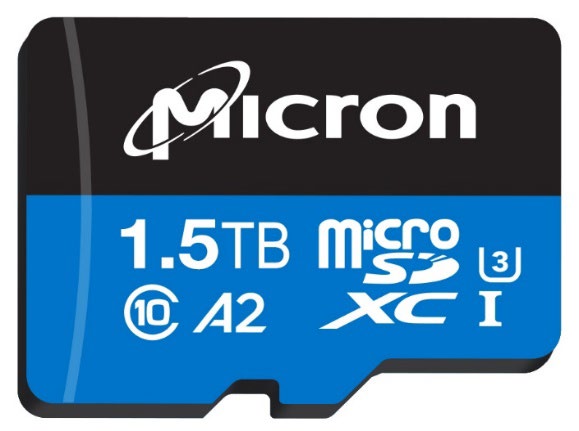 Opens in a new window.
Opens in a new window.Sponsored By

Executive Product Showcase:
Edge storage for AI-enhanced
video applications
Artificial intelligence (AI), the internet of things (IoT) and 5G are converging at the edge and enabling a wide range of new products, services and applications for the video security industry. This growth can be seen in the IP video security and video security as-a-service (VSaaS) markets, which are estimated to be worth $83 billion by 2030 and growing at a compound annual growth rate (CAGR) of 10.9% during the forecast period1.
With the adoption of AI functionality in camera devices, a richer dataset will be created and stored at the edge. Thus, edge storage is becoming a key element of cloud-based, AI-enabled video security applications. This brief discusses the use cases and solutions for edge storage applications.
Benefits of edge storage for
video applications
The benefits of edge storage in video applications stretch far beyond cost benefits.
For starters, edge storage reduces the amount of bandwidth the cameras themselves consume. This is especially useful in applications where bandwidth is limited.
Other benefits include ease of deployment and management, as well as scalability since no physical recording systems are required.

Applications driving edge storage needs
The applications in which edge storage in AI-enabled devices can be utilized are endless, but these four are witnessing substantial growth due to their usage of AI, IoT and 5G:
- Video Security as a Service (VSaaS)
- Smart home
- Mobile security
- Video telematics
Video Security as a Service (VSaaS)
VSaaS, a cloud-based video security solution, has become increasingly popular in recent years, mainly because of its ease of deployment. With no need for network video recorders (NVRs), servers or complicated wiring, data is stored on the edge and transferred to the cloud. This combination of edge and cloud means that collected data can be stored on the camera itself—on a microSD card—and then transferred as needed to the cloud for easy access, saving precious bandwidth.
VSaaS is an ideal solution for enterprises looking for a flexible, cost-effective way to monitor and manage sites remotely from an internet-connected device anytime, anywhere. A wide variety of AI analytics can also be applied to VSaaS solutions to provide users with smart data to proactively help keep their premises safe and secure. As 5G becomes more available, VSaaS solutions will greatly benefit from higher bandwidth and low latency.
Smart home
The smart home market has witnessed significant growth over the past few years, greatly enabled by IoT.
Video security cameras and video doorbells have become key components of today’s smart home. Easy to install and easy to monitor, modern home security cameras and video doorbells provide homeowners with an affordable way to secure their homes, all while providing access to video from the palm of their hand.
Edge storage on smart home devices makes DIY installation of cameras much easier, doing away with unnecessary, complicated wiring to a physical storage system. In addition, applying AI to smart home devices can reduce false alarms caused by user error or non-threatening triggers.
Mobile Security
Body-worn cameras for mobile security applications have become increasingly popular in law enforcement and enterprise wearable camera sectors such as security agencies, retailers, warehousing and logistics. Video and audio recordings are stored directly on an onboard microSD card and then streamed or managed centrally through integration with a video or evidence management system for immediate response, incident management or training purposes. AI-enabled body cameras can automatically capture vital events and help effectively mine data.
Video telematics
Video telematics combines video with vehicle data to improve fleet management. Built-in AI provides real-time analysis and alerts to drivers, which could increase vehicle safety and collision avoidance. At the same time, data can be transferred via the cloud so that fleet managers can obtain oversight on employees and assets. Edge storage in video telematics is a critical part of incident management for fleet managers.
Facing the challenge of performance impact by workload
Storage workload can significantly impact a memory card’s performance. Because the storage workload of an AI-enabled camera is different than a standard camera (more random write operations are seen in AI-enabled camera storage workloads), edge storage memory cards require a workload-optimized solution. The figure below shows the storage workload comparison.

Facing the challenge of performance impact by workload

Unlike most memory cards on the market that are consumer-grade and have limited write capability, Micron’s i400 microSD cards are designed for AI-enhanced video applications with features such as:
• High capacity (64GB to 1.5TB)
Supports up to 5 years of high-quality, continuous, 24/7 video recording and up to 4 months of storage2.
• Outstanding recording performance
Optimized design delivers sustained performance for concurrent 4K video recording and up to 8 AI capture events every second.
• Industrial quality
Reliable high quality provides a 2 million hour mean time to failure (MTTF) rating, plus 5-proof protection encompassing water, shock, x-ray, magnet and impact.
• Smart management
Health monitoring tracks usage and card health, and the field firmware update provides a secure way for the card to be updated remotely when needed.
1. Allied Market Research: IP Video Surveillance and VSaaS Market By Product Type (Hardware, Software, Cloud Based Solutions, and Services) and Application (Banking & Financial Sector, Retail, Government & Higher Security, Manufacturing & Corporate, Residential, Entertainment, Healthcare, and Others) — Global Opportunity Analysis and Industry Forecast, 2021-2030.
2. Assumes a bit rate of 1 megabit per second
© 2022 Micron Technology, Inc. All rights reserved. All information herein is provided on an “AS IS” basis without warranties of any kind. Products are warranted only to meet Micron’s production data sheet specifications. Products, programs, and specifications are subject to change without notice. Micron Technology, Inc. is not responsible for omissions or errors in typography or photography. No hardware, software or system can provide absolute security under all conditions. Micron assumes no liability for lost, stolen or corrupted data arising from the use of any Micron products, including those products that incorporate any of the mentioned security features Micron, the Micron logo, and all other Micron trademarks are the property of Micron Technology, Inc. All other trademarks are the property of their respective owners. Rev. A 08/2022 CCM004-676576390-11621